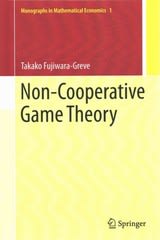Question
StatCrunch Skill: Hypothesis Tests for Proportions with Summary In this problem, we focus on running a hypothesis test when you have a summary of the
StatCrunch Skill: Hypothesis Tests for Proportions with Summary
In this problem, we focus on running a hypothesis test when you have a summary of the data.
Context: In 2014, Gallup conducted a poll where 42% of those surveyed said they were "Independents" (as opposed to Democrat or Republican). You take a random sample of 74 people at your campus. You believe that the percentage of Independents on your campus is lower than the 42% found in the Gallup poll. You want to test that claim. In your sample, 27 students said they were Independents.
Your Null Hypothesis is:Ho:p=0.42Ho:p=0.42
Your Alternative Hypothesis is:Ha:p<0.42Ha:p<0.42
First, read the steps. You also might want to watch the video LINK [+].
In this problem, the definition of "success" is someone who says they are Independent, since we are testing a claim about the proportion of respondents who say they are Independent. The number of "observations" is the total number of people in your survey.
Run a hypothesis test for proportions for this situation. Be sure that you carefully enter the value of 0.42 for both the null proportion value and for the alternative proportion value. Also be sure that you have the inequality correctly set to <.
After you compute the test results, answer the following:
A) What is the sample proportion? This is labeled as "Sample Prop." in the output.
Answer: Sample proportion = . (Round to FOUR decimal places)
B) What is the test statistic? This is labeled as Z-Stat. Remember, this test is based on the assumption that the distribution is normal. We can make this assumption becausenpo=74(0.3649)>10npo=74(0.3649)>10andn(1po)=74(0.6351)>10n(1-po)=74(0.6351)>10. Recall that the test statistic tells us how many standard deviations from the mean this particular sample is.
Answer: Test-statistic, z= . (Round to FOURdecimal places)
Note that your sample proportion IS below the Gallup poll of 42%. However, is this result due to normal random variation that is built into samples? Or, is the sample so unlikely that you can attribute it to "something else." That is why we need the P-value...
C) What is the P-value for this test? This is the probability of getting a sample like the one you for which you have a summary.
Answer: P-value = (Round to FOURdecimal places)
From your results above, you see that the probability of getting a sample like the one you have is about 17%. That's pretty high. If we set ourlevel at 0.05, this is above that. We are more likely to get this kind of sample. So, we fail to reject the null hypothesisHo:p=0.42Ho:p=0.42. (Remember, we either reject the null, or we fail to reject it. Those are the ONLY two options available to us.) Since we cannot reject the null (Ho:p=0.42Ho:p=0.42), we do not have evidence that our campus hada smaller proportion of independents.
Step by Step Solution
There are 3 Steps involved in it
Step: 1

Get Instant Access to Expert-Tailored Solutions
See step-by-step solutions with expert insights and AI powered tools for academic success
Step: 2

Step: 3

Ace Your Homework with AI
Get the answers you need in no time with our AI-driven, step-by-step assistance
Get Started


